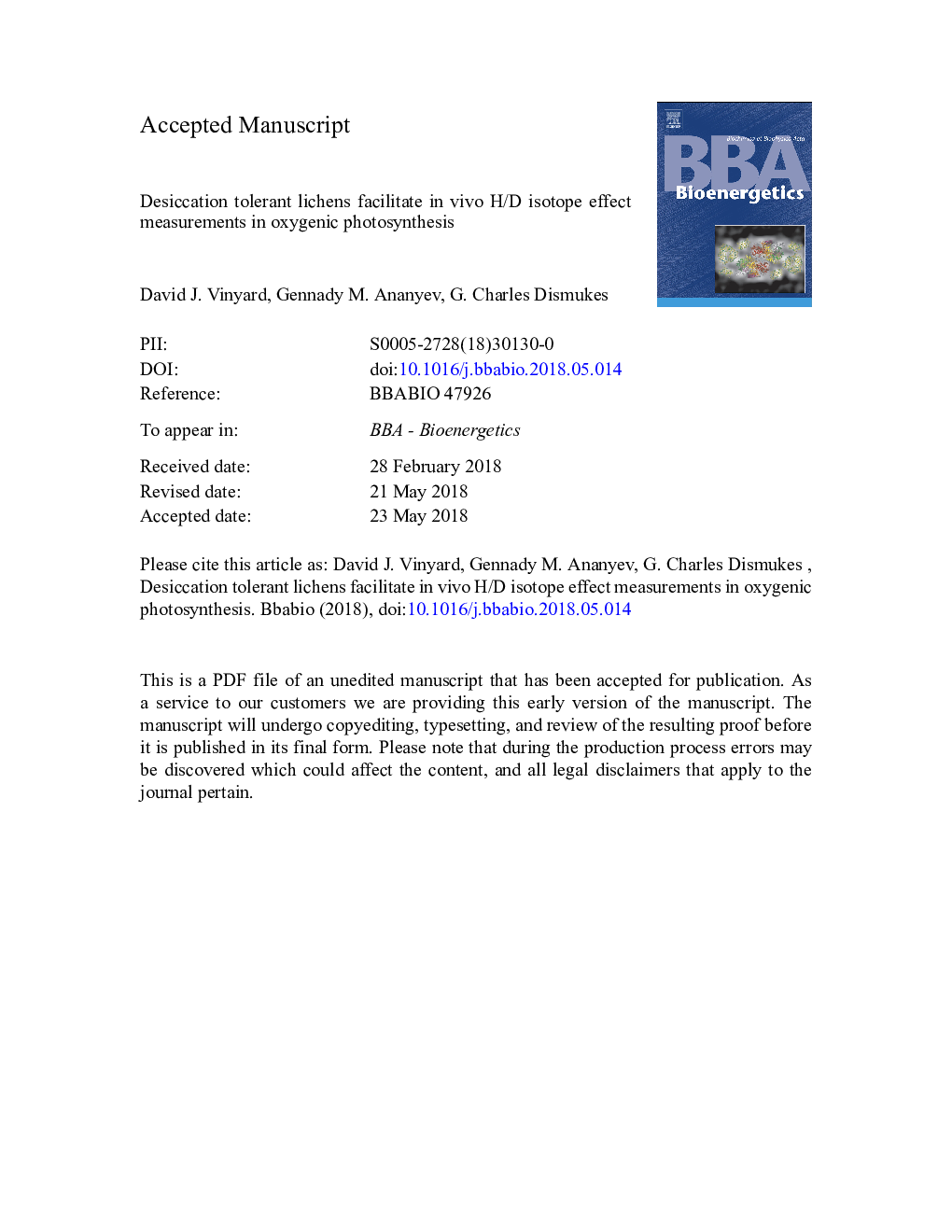| Article ID | Journal | Published Year | Pages | File Type |
|---|---|---|---|---|
| 8949236 | Biochimica et Biophysica Acta (BBA) - Bioenergetics | 2018 | 20 Pages |
Abstract
We have used the desiccation-tolerant lichen Flavoparmelia caperata, containing the green algal photobiont Trebouxia gelatinosa, to examine H/D isotope effects in Photosystem II in vivo. Artifact-free H/D isotope effects on both PSII primary charge separation and water oxidation yields were determined as a function of flash rate from chlorophyll-a variable fluorescence yields. Intact lichens could be reversibly dehydrated/re-hydrated with H2O/D2O repeatedly without loss of O2 evolution, unlike all isolated PSII preparations. Above a threshold flash rate, PSII charge separation decreases sharply in both D2O and H2O, reflecting loss of excitation migration and capture by PSII. Changes in H/D coordinates further slow charge separation in D2O (â23% at 120â¯Hz), attributed to reoxidation of the primary acceptor QAâ. At intermediate flash rates (5-50â¯Hz) D2O decreases water oxidation efficiency (O2 evolution) by â2-5%. No significant isotopic difference is observed at slow flash rates (<5â¯Hz) where charge recombination dominates. Slower D2O diffusion, changes in hydrogen bonding networks, and shifts in the pKa's of ionizable residues may all contribute to these systematic variations of H/D isotope effects. Lichens' reversible desiccation tolerance allows highly reproducible H/D exchange kinetics in PSII reactions to be studied in vivo for the first time.
Related Topics
Life Sciences
Agricultural and Biological Sciences
Plant Science
Authors
David J. Vinyard, Gennady M. Ananyev, G. Charles Dismukes,
